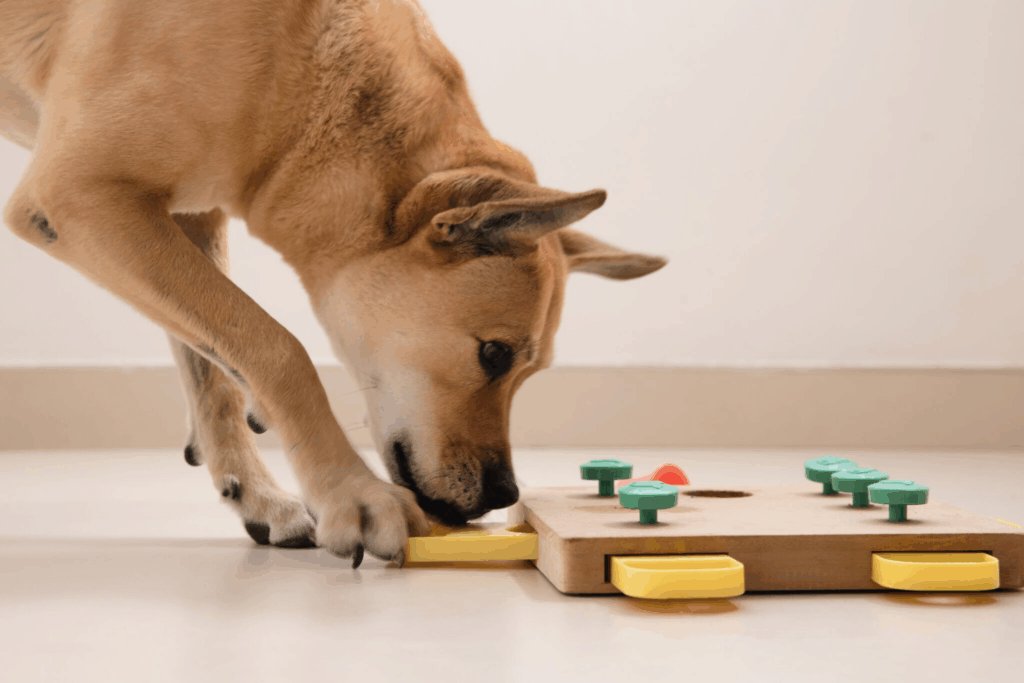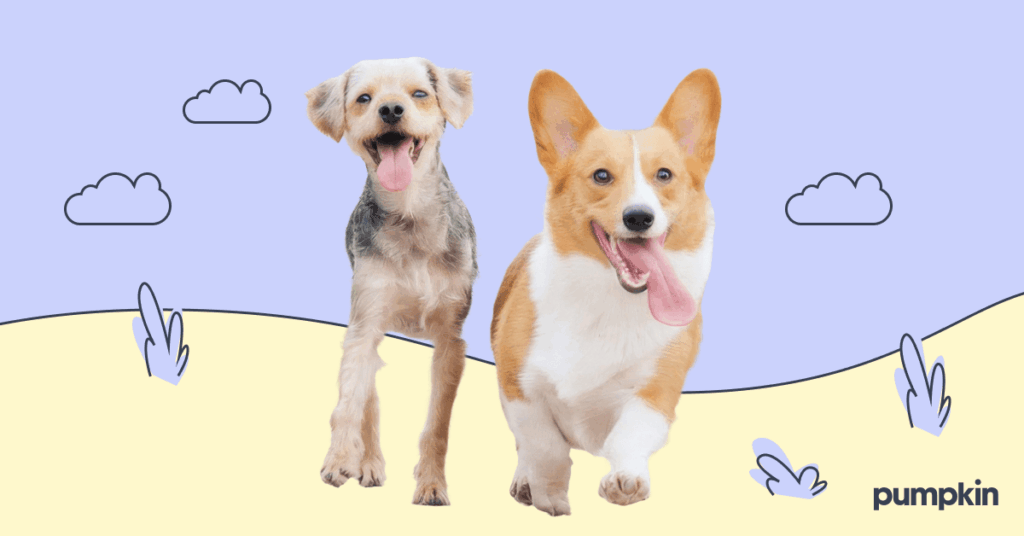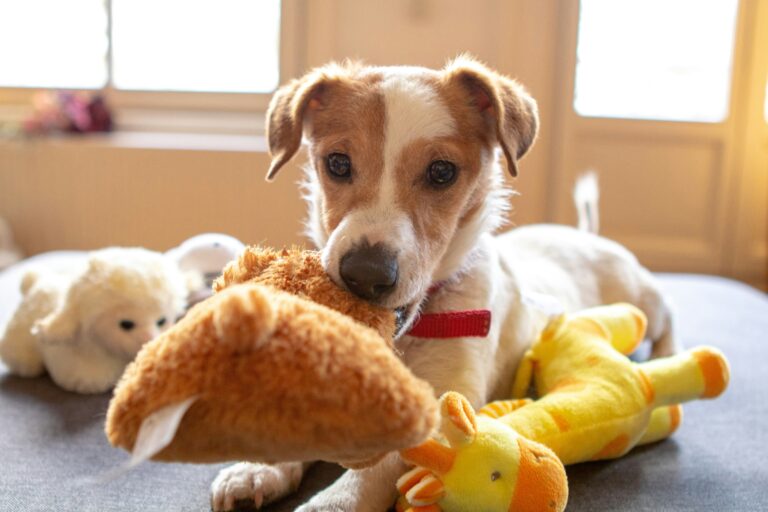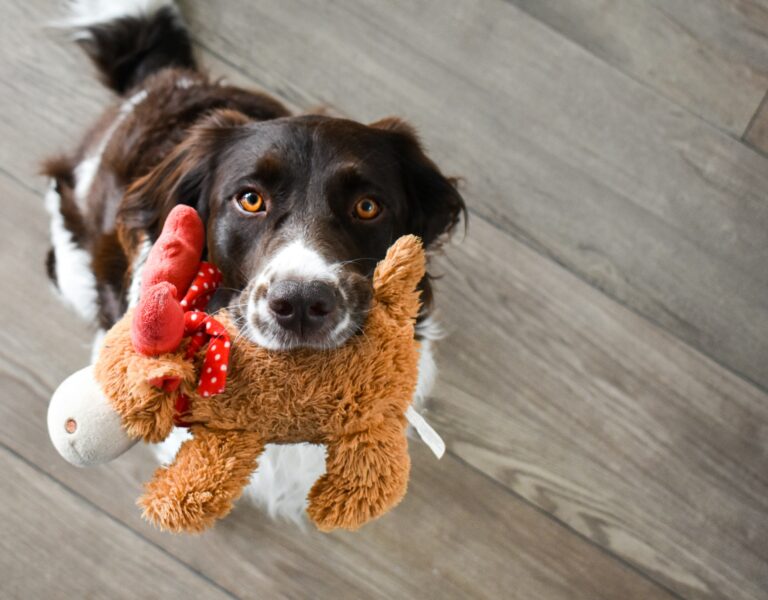Immersing oneself in the world of tiny, playful paws, it’s clear that playtime is crucial for a pet’s growth and development. Yet, finding the right toy that challenges, entertains, and engages them can often feel like a puzzle. This is where interactive toys, specifically designed for our smallest furry friends, step in.

As the trend of pint-sized puzzlers gains traction, the market is flooded with innovative, stimulating options. From intricate mazes that challenge their intellect, to toys with hidden treats that tap into their instinctual need to hunt, these little playthings have a big role. 🐾 They not only make playtime fun and exciting, but also stimulate our pets mentally, keeping them happy and contented.
In the upcoming sections, we’ll be diving deeper into this enchanting world of interactive toys for small pets. We will explore their benefits, types, and even the best ways to introduce them to our pets. Also, there’s some exclusive information about how these toys can help foster a bond between you and your tiny-tailed friend.
Whether you’re a new pet parent trying to understand the importance of play in a pet’s life or an experienced one looking for innovative toys to keep your pet engaged, this post will serve as your comprehensive guide. So, brace yourselves for a fascinating journey into the realm of pint-sized puzzlers, filled with a wealth of information and insightful tips.
Stay tuned to uncover the magic these interactive toys hold within, and how they can transform playtime into an enriching experience for your tiny-tailed companion. Get ready to provide your pets with not just a toy, but a tool that will stimulate their minds, engage their senses and add a dash of fun to their lives! 🐾🧩🎉
How Interactive Toys Support Overall Well-Being
Interactive toys are far more than just entertainment for pets. They serve a critical role in promoting physical health, mental sharpness, and emotional stability. Especially for indoor pets or those with limited outdoor access, interactive toys simulate natural behaviors such as hunting, problem-solving, and exploring. These activities are essential for a well-balanced, healthy pet.
Physical stimulation from interactive toys can aid in managing weight and improving coordination. Whether it’s chasing, pouncing, or tugging, each movement contributes to muscle development and cardiovascular health. Mentally, these toys prevent stagnation by encouraging pets to think and react in different ways. Emotionally, pets that are regularly engaged and mentally stimulated tend to exhibit fewer signs of anxiety, stress, and destructive behavior.
Building Confidence Through Play
One often overlooked benefit of interactive play is the boost in confidence it can provide, especially for timid or rescue pets. A toy that offers small, achievable challenges builds a sense of accomplishment. For example, a puzzle toy that dispenses treats when solved can reinforce the idea that interacting with their environment yields positive results. Over time, this consistent feedback loop helps shy pets become more curious, bold, and socially engaged.
Furthermore, regular play allows pet owners to better understand their companion’s unique personality. A pet that enjoys nosing open compartments on a toy may be especially inquisitive, while one that enjoys repetitive fetch games might prefer structured activities. Identifying and nurturing these traits through toys strengthens trust and communication between pet and owner.
Reducing Stress and Separation Anxiety
Many pets experience stress when left alone, especially in the absence of stimulation. Interactive toys can help mitigate this stress by keeping the pet’s mind occupied. Toys that mimic natural behaviors—like digging, chasing, or sniffing—can create a calming distraction in the owner’s absence. For dogs, toys that release scents or treats over time are particularly helpful in holding attention for longer periods.
Some toys are even designed with calming features like heartbeat mimics or motion sensors that simulate interaction. These are particularly helpful for puppies or newly adopted animals who are adjusting to a new home. Even simple puzzle feeders or textured toys with hidden snacks can reduce anxiety and create a more peaceful environment when you’re not around.
The Role of Sensory Stimulation
Sensory stimulation is another essential factor in the usefulness of interactive toys. Pets rely on their senses—particularly smell, sight, and touch—to understand their world. Toys that incorporate multiple sensory cues are more likely to hold a pet’s attention. For example, toys that combine bright colors with interesting textures and food-based scents can simultaneously engage several senses.
This multisensory experience helps create stronger mental associations and memories. A toy that crackles, glows, and smells like chicken offers a complex experience that is far more enriching than a static object. It also allows pets with certain sensory limitations, like vision loss, to still engage meaningfully with their toys using smell and touch.
Interactive Toys and Breed-Specific Needs
Different pet breeds have varying levels of energy and intelligence, which should influence the type of interactive toys you choose. High-energy breeds such as terriers, border collies, or Jack Russells often benefit from more challenging toys that combine physical and mental tasks. Toys that can be chased, shaken, or dug into will satisfy their need for constant activity and stimulation.
Conversely, more relaxed or less active breeds may prefer toys that provide steady, low-effort engagement, such as treat-dispensing toys or soft puzzle mats. Similarly, some breeds have a higher drive for chewing, while others are more interested in toys that roll, bounce, or squeak. Knowing your pet’s breed tendencies can help you better match them with toys that meet both their instinctual drives and energy levels.
Training Enhancement with Interactive Toys
Interactive toys can be powerful tools in training routines. Many toys can be incorporated into reward-based systems, reinforcing desired behaviors in a positive and engaging way. For instance, a treat ball can be used to reward a dog for staying in a designated area or completing a command sequence.
You can also use toys to teach problem-solving, which is particularly effective for intelligent breeds. Teaching your pet to interact with a toy in a specific way—for example, turning it over to release a snack—encourages them to think critically and follow a process. Repeating these challenges builds discipline, patience, and a greater capacity for learning.
Moreover, using toys to train basic commands like “drop it,” “fetch,” or “wait” allows you to blend playtime with valuable obedience lessons. This integrated approach turns everyday routines into productive bonding experiences while reinforcing good behavior.
Social Development Through Interactive Play
Play is not only about fun—it also plays a role in social development. For multi-pet households, certain interactive toys encourage cooperative play, helping pets learn boundaries and communication. Tug toys or shared puzzles can foster positive interactions between animals, reducing aggression and territorial behavior.
Even in single-pet homes, toys that mimic social behavior (like robotic toys that respond to touch or voice) help fulfill social needs. These interactions prevent feelings of isolation, especially in animals that crave companionship. Pairing this with regular playtime with their human ensures that pets remain emotionally balanced and socially adaptable.
Creating a Rotational Toy System
A great way to keep interactive toys effective is to implement a rotation system. Pets, much like humans, can become bored with the same stimulus over time. By rotating toys weekly or even daily, you can reintroduce novelty without constantly buying new products. You may store half the toys in a bin and switch them out every few days, creating a “new toy” effect every time.
This approach maintains long-term engagement and also helps extend the life of each toy. Pets will look forward to rediscovering toys that were temporarily out of reach, treating them as something new and exciting.
Interactive Toys for Special Needs Pets
Pets with physical limitations or disabilities also benefit from interactive toys, provided the toys are thoughtfully chosen. For visually impaired pets, toys that produce sound or carry scent trails are especially valuable. Tactile toys with different textures also offer satisfying sensory feedback.
For pets with limited mobility, consider toys that are easy to manipulate with minimal movement. Treat puzzles that can be nudged with a nose or paw, or hanging toys that move with light interaction, are excellent choices. Just like with any pet, it’s important to tailor toy selection to match their specific capabilities and comfort levels.
Sustainable and DIY Interactive Toys
In addition to store-bought options, there’s growing interest in sustainable, do-it-yourself interactive toys. Many effective toys can be made from household items, offering cost-effective and environmentally conscious alternatives. For example, filling an empty cardboard box with treats and scrunched-up paper creates a fun foraging activity. Old socks tied around crinkled water bottles become satisfying noise toys for dogs.
DIY toys not only allow for customization based on your pet’s preferences, but they also let you repurpose materials that would otherwise be thrown away. Just ensure that any DIY toy is free of choking hazards, sharp edges, or toxic materials.
Pet Owner Involvement in Interactive Play
No interactive toy can replace the value of human interaction. The most successful play sessions happen when the owner is engaged and responsive. Use interactive toys not just as distractions, but as tools to participate in your pet’s play. Whether it’s tossing a treat ball, hiding puzzle pieces, or cheering them on during a game of fetch, your involvement increases the joy and strengthens your bond.
Pets thrive on positive reinforcement, so celebrating small wins—like solving a toy or retrieving a ball—builds confidence and emotional closeness. This connection is what ultimately turns a simple toy into a deeply enriching experience for your pet.
Key Features of Interactive Toys for Tiny Tails
Interactive toys for tiny tails are usually small in size and designed with various features to captivate pets’ attention. These features may include sounds, movements, or lights that stimulate the pet’s senses.
Sound-Activated Toys
Sound-activated toys are a great way to engage pets. They emit sounds that attract the pet’s attention and encourage them to interact with the toy. These sounds can range from simple squeaks to intricate melodies or animal noises.
Movement-Based Toys
Movement-based toys, on the other hand, mimic the movements of prey animals, stimulating the pet’s natural hunting instincts. These toys can move in unpredictable ways, making them an exciting challenge for pets.
Light-Based Toys
Light-based toys use bright colors or flashing lights to attract pets’ attention. Some even project patterns or images onto surfaces, creating an engaging light show for the pet to chase or investigate.
Types of Interactive Toys for Tiny Tails
Interactive toys for tiny tails come in various shapes and sizes, each designed to cater to specific needs of different pets.
Interactive Puzzle Toys
Interactive puzzle toys require pets to solve simple puzzles to get a reward. This could involve moving pieces around to reveal hidden treats, or pushing buttons to activate a treat-dispensing mechanism.
Treat-Dispensing Toys
Treat-dispensing toys, on the other hand, reward pets for playing with the toy. These toys usually have a compartment where you can hide treats, and the pet must figure out how to access them. This type of toy can keep pets entertained for hours, while also rewarding them for their efforts.
Interactive Fetch Toys
Interactive fetch toys take the classic game of fetch to a whole new level. They can throw balls at different distances, and some even have a retrieval feature that enables the toy to pick up the ball and launch it again.
Choosing the Right Interactive Toy for Your Pet
Choosing the right interactive toy for your pet depends on several factors, including the pet’s size, age, and personal preferences.
Consider Your Pet’s Size
When choosing a toy, it’s important to consider the pet’s size. Tiny tails require smaller toys that are easy to handle and maneuver. A toy that’s too big might be intimidating, while one that’s too small could pose a choking hazard.

Consider Your Pet’s Age
Age is another important factor. Younger pets might require more durable toys, as they tend to chew and play more roughly. Older pets, on the other hand, might prefer softer toys that are easier on their teeth and gums.
Consider Your Pet’s Preferences
Finally, it’s essential to consider your pet’s personal preferences. Some pets might prefer toys that make noise, while others might prefer ones that move or light up.
Benefits of Interactive Toys for Tiny Tails
Interactive toys for tiny tails offer numerous benefits. They provide mental stimulation, help alleviate boredom, and can even contribute to maintaining a healthy weight.
Mental Stimulation
As mentioned earlier, interactive toys provide mental stimulation by challenging pets to solve puzzles or interact with moving parts. This can help keep pets sharp and focused, reducing the risk of cognitive decline in older pets.
Boredom Alleviation
Interactive toys can also help alleviate boredom by providing pets with an engaging activity that keeps them occupied. This can prevent behavioral issues caused by boredom, such as excessive chewing or barking.
Maintaining a Healthy Weight
Lastly, interactive toys can contribute to maintaining a healthy weight in pets. Many interactive toys encourage physical activity, which can help burn calories and prevent obesity.
In conclusion, “Pint-Sized Puzzlers: Interactive Toys for Tiny Tails” successfully shines a light on the essentiality of interactive toys for the cognitive development and physical well-being of our small pets. As pet owners, it’s our responsibility to keep our furry companions stimulated and entertained, and these pint-sized puzzlers serve as the perfect tool for the job. The range of puzzles, from simple to complex, allows a perfect fit for pets of all ages and skill levels, fostering their problem-solving skills while keeping them occupied. By providing our pets with these engaging toys, we not only enhance their quality of life but also strengthen our bond with them. Furthermore, these interactive toys are a practical solution to keep our pets away from destructive behavior. Therefore, incorporating these pint-sized puzzlers into our pets’ routine can lead to happier, healthier companions. All in all, the importance of interactive toys for our tiny tailed friends cannot be overstated. So, let’s embrace these “Pint-Sized Puzzlers,” not merely as toys, but as integral tools in our pets’ growth and development. After all, a mentally stimulated pet is a happy pet! 🐾🧩



